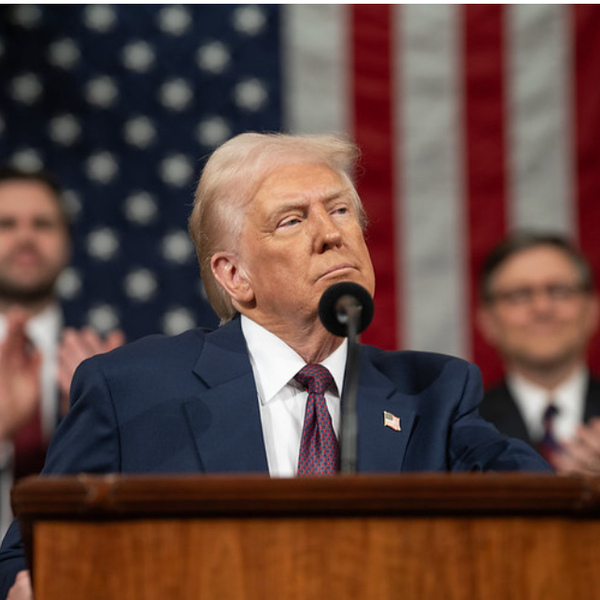Without The Voting Rights Act, 2016 Will Be Our Least Democratic Election In Decades

The 2016 presidential election is the first since the Supreme Court’s 2013 Shelby County v. Holder decision to strike down two sections of the Voting Rights Act, both of which had served as crucial structural safeguards against voter disenfranchisement since the ‘60s. This time around, states and municipalities have the freedom to run their own elections without oversight from the Justice Department. They can run democracy into the ground, if they want to, and in many cases, they have.
The VRA outlined a coverage formula that required states with a strong history of structurally disenfranchising voters be subject to federal oversight. The sections of the law on the Supreme Court’s chopping block — Section 4(b) and Section 5 — stipulated that states and municipalities that perfunctorily precluded voters would be subject to a preclearance requirement, which required these states to seek federal approval before instituting any changes to their voting practices.
Advocacy groups have tracked the effects of Shelby County v. Holder since 2013, and they claim there has been a clear uptick in racially discriminatory voter suppression since the ruling — in fact, such a trend is plain to see.
This month, the National Association of Latino Elected and Appointed Officers (NALEO) released “Latino Voters at Risk: Assessing the Impact of Restrictive Voting Changes in Election 2016,” which examines the effects of restrictive voting practices — including registration restrictions, proof of citizenship requirements, early registration deadlines, Voter ID laws, closed primaries, and lack of language accommodations — on the Latino voting population in 19 states that have successfully passed restrictive voting laws since 2012, including 16 that would have required federal approval of such changes before enacting them.
NALEO found that over 8 million Latinos are vulnerable to vicious voter restrictions in this election, and that 875,000 Latino votes will be affected by both outright and ostensible forms of voter disenfranchisement, which include registration restrictions, voter ID laws, shortened in-person voting times, and absentee ballot restrictions.
Quite notably, they found that Latinos in states with the largest increases in their Latino population are the most vulnerable. In the absence of federal oversight, there’s very little than can be done to protect their voting rights, other than protracted legal fights after such laws are passed.
The Public Religion Research Institute’s “American Values Survey” may show one, albeit obvious, reason for the flood of new laws. Though their survey found that 56 percent of respondents believed that Hispanics face “a lot of discrimination” in America, only 42 percent of Republicans believed Hispanics face a disproportionate amount of discrimination, compared to 68 percent of Democrats.
Republicans, incidentally, are the ones proposing restrictive legislation because Republicans benefit from implementing laws that disenfranchise minority voters; voters who, on the whole, tend to vote more often for Democrats.
NALEO makes a strong case for Latino voter disenfranchisement, but similarly unscrupulous laws can and have been applied to a number of minority communities in the U.S., including African-Americans, disabled people, and the elderly.
Take, for example, the events of March 22, when watched voter suppression happen right before our eyes during the Arizona presidential primary as the dramatically reduced number of polling sites forced voters to spend the entire day waiting on lines to cast their ballots. Arizona was one of the 16 states in which laws to restrict voting rights would have had to been cleared by the federal government, before Shelby County v. Holder.
North Carolina was another such state. After the Supreme Court gutted the VRA, Governor Pat McCrory signed into law strict voter ID requirements, cut early voting, eliminated same-day registration, banned out-of-precinct voting, and ended preregistration for future voters younger than 18 years old. Of course, the effects of these restrictions were later found to have disproportionately affected African Americans and Democrats.
How did we get here? What went wrong?
In Shelby County v. Holder, Shelby County, Alabama claimed that the continued renewal of Section 4(b)’s coverage formula and Section 5’s preclearance requirement blurred the line between federal and state jurisdictions as outlined in the 14th, 15th, and 10th Amendments. Shelby County also argued that the VRA used outdated information from 1964, 1970, and 1975 to justify greater federal oversight 50 years later.
Writing for a 5-to-4 majority, Chief Justice John Roberts echoed Shelby County’s sentiments, stating that Section 4(b) was incompatible with the constitutional principles of federalism and states’ equal sovereignty because the unequal treatment is rooted in “40 year-old facts [that have] no logical relationship to the present day.” Roberts argued that, while the VRA was effective in remedying racial discrimination in the voting process, progress since its passage made its protections irrelevant.
The Court’s majority opinion suggests that the United States has achieved equality, and, therefore, no longer needs the coverage formula and preclearance requirements in the Voting Rights Act as structural safeguards. It implies that the racism, sexism, and classism that necessitated the creation of those safeguards no longer exist.
However, the United States is not a perfectly egalitarian country by any definition — especially in terms of voting access.
In October of 2012, the Brennan Center published the Election 2012: Voting Laws Roundup, which provided an overview of state election law. The Brennan Center reported that voter suppression efforts peaked after the 2010 midterm election, and that, between 2011 and 2012, over 180 voter restriction bills were proposed in 41 states.
And since the Supreme Court’s decision, such efforts have only grown more intense. Without the preclearance of historically restrictive states that the VRA used to require, more and more often these bills make it into law, and the vote is distorted even more to favor those with the power to manipulate it — namely, state legislatures and governor’s mansions, the overwhelming majority of which are controlled by Republicans.
There may come a time such as the one Chief Justice Roberts imagined in 2013, when our politics is free of discriminatory animus and attempts to restrict the vote along racial or otherwise partisan lines. That day has not come, and without the full strength of the Voting Rights Act, it never will.
Photo: Ohio voters cast their votes at the polls for early voting in the 2012 U.S. presidential election in Medina, Ohio, October 26, 2012. REUTERS/Aaron Josefczyk








